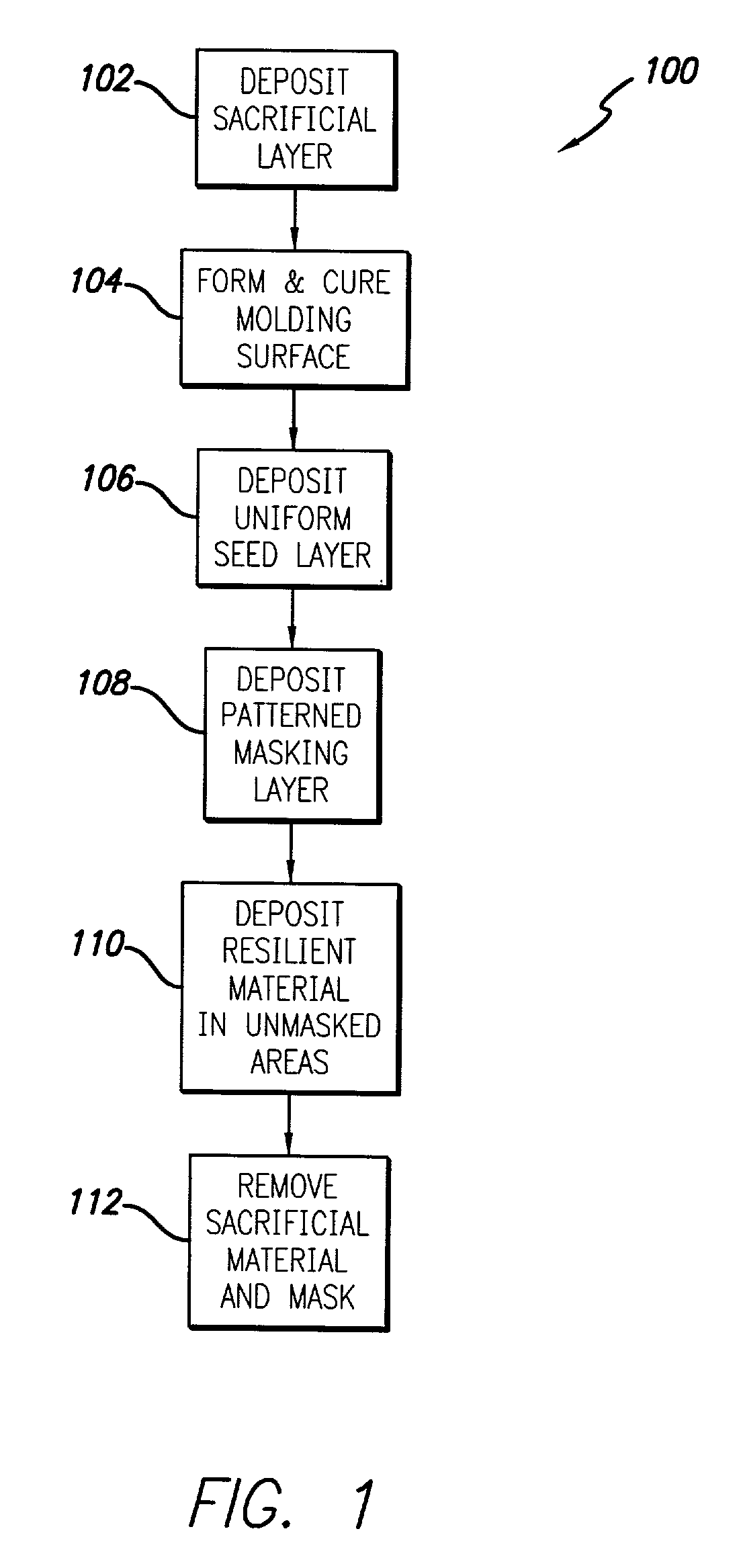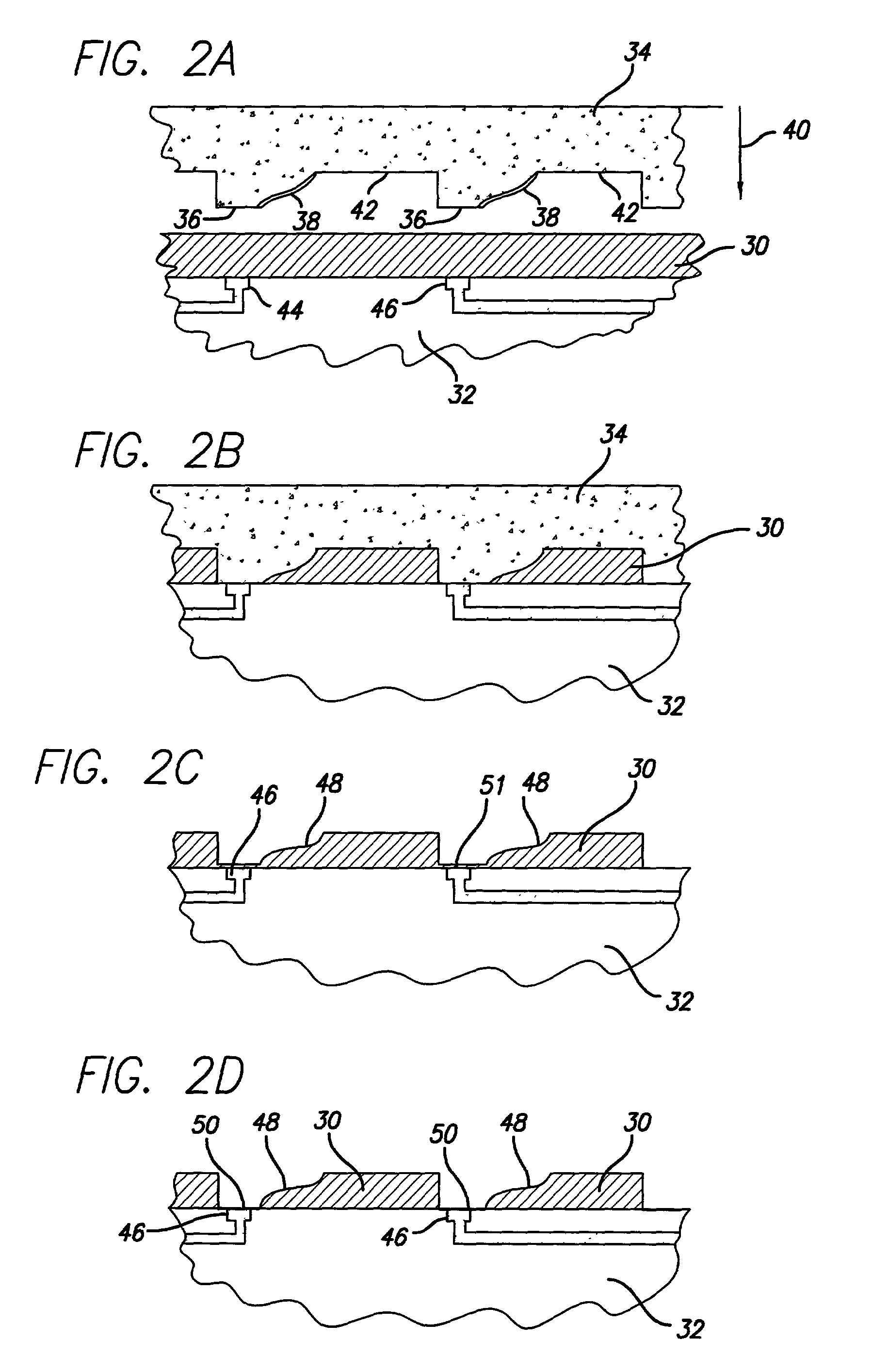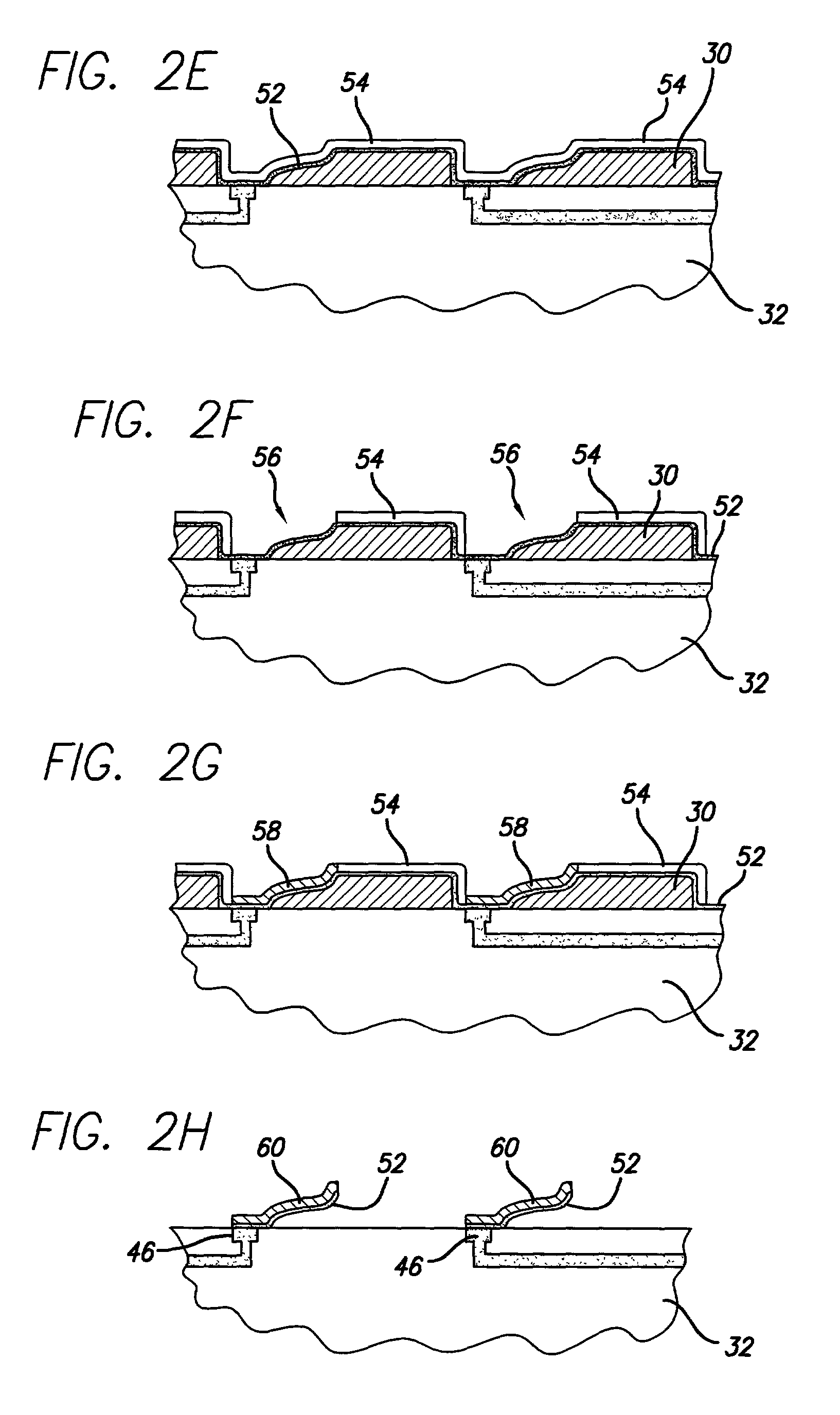Method for forming microelectronic spring structures on a substrate
a micro-electronic spring and substrate technology, applied in the field of lithographic scale, micro-electronic spring contacts, can solve the problems of unsuitable prior art manufacturing methods for making lithographic type spring contacts, the cost of fabricating fine-pitch spring contacts has limited the range of applicability to less cost-sensitive applications, and the cost of manufacturing equipment and process tim
- Summary
- Abstract
- Description
- Claims
- Application Information
AI Technical Summary
Benefits of technology
Problems solved by technology
Method used
Image
Examples
Embodiment Construction
[0114] A silicon wafer with a 0.5 micron surface oxide layer was selected for a prototype substrate. A layer of chrome was sputtered on a surface of the substrate, followed by a layer of gold, to provide a shorting layer. A 4.0 mil (100 micron) thick layer of negative dry-film photoresist was applied to the sputtered gold layer using a vacuum laminator. A second 3.0 mil (75 micron) thick layer of the same type of photoresist was applied over the first layer. The substrate was placed on a hot plate and heated until the photoresist was soft. An embossing tool with protruding triangular teeth contoured to produce the desired spring shape was pressed into the photoresist laminate while the laminate was soft. The substrate was cooled and the embossing tool was removed. A photolithography mask and UV light were used to expose (and thus cross link) the photoresist laminate everywhere except in the area of the spring base contact. The photoresist was developed using a spray developer with s...
PUM
| Property | Measurement | Unit |
|---|---|---|
| Pressure | aaaaa | aaaaa |
| Angle | aaaaa | aaaaa |
| Area | aaaaa | aaaaa |
Abstract
Description
Claims
Application Information
 Login to View More
Login to View More - R&D
- Intellectual Property
- Life Sciences
- Materials
- Tech Scout
- Unparalleled Data Quality
- Higher Quality Content
- 60% Fewer Hallucinations
Browse by: Latest US Patents, China's latest patents, Technical Efficacy Thesaurus, Application Domain, Technology Topic, Popular Technical Reports.
© 2025 PatSnap. All rights reserved.Legal|Privacy policy|Modern Slavery Act Transparency Statement|Sitemap|About US| Contact US: help@patsnap.com



